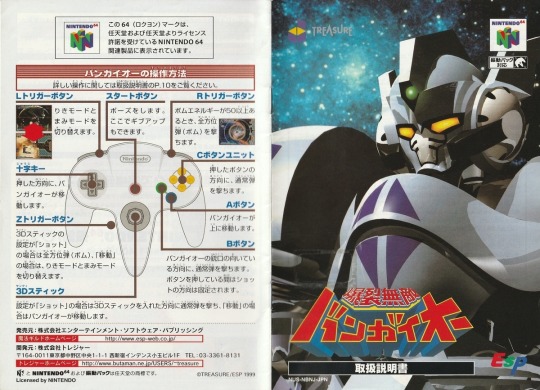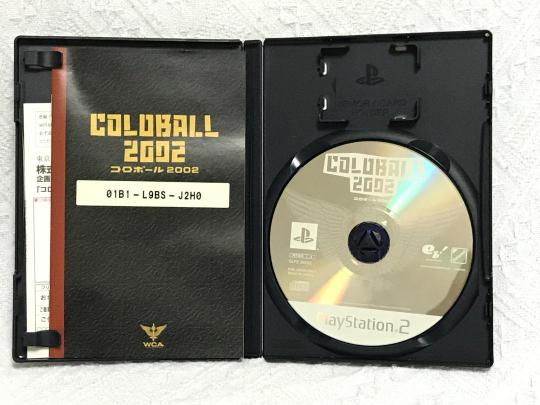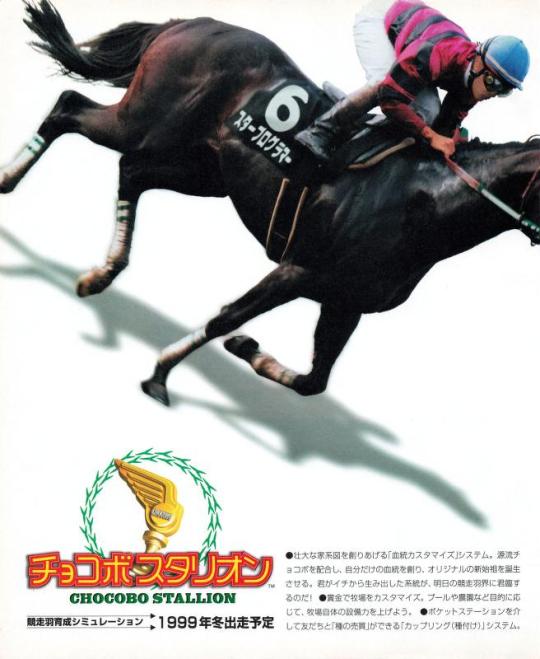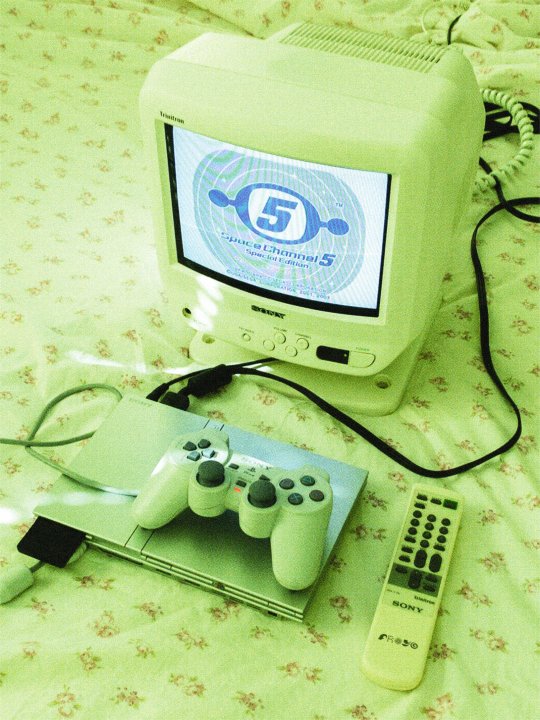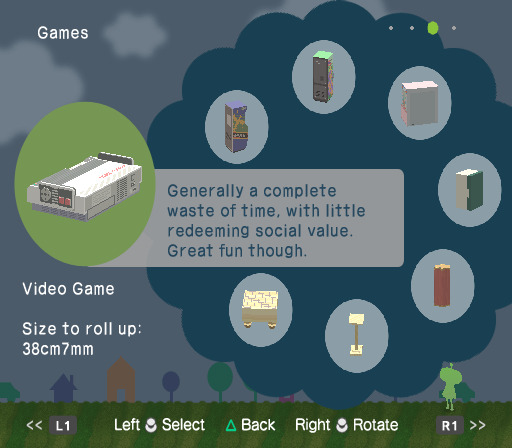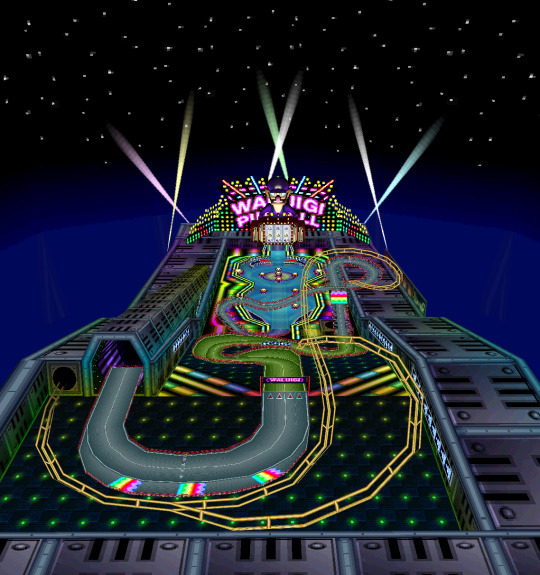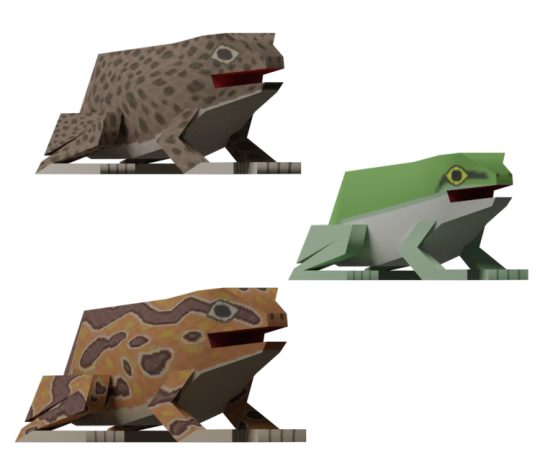Note
love this controller
please keep controller posting
alright
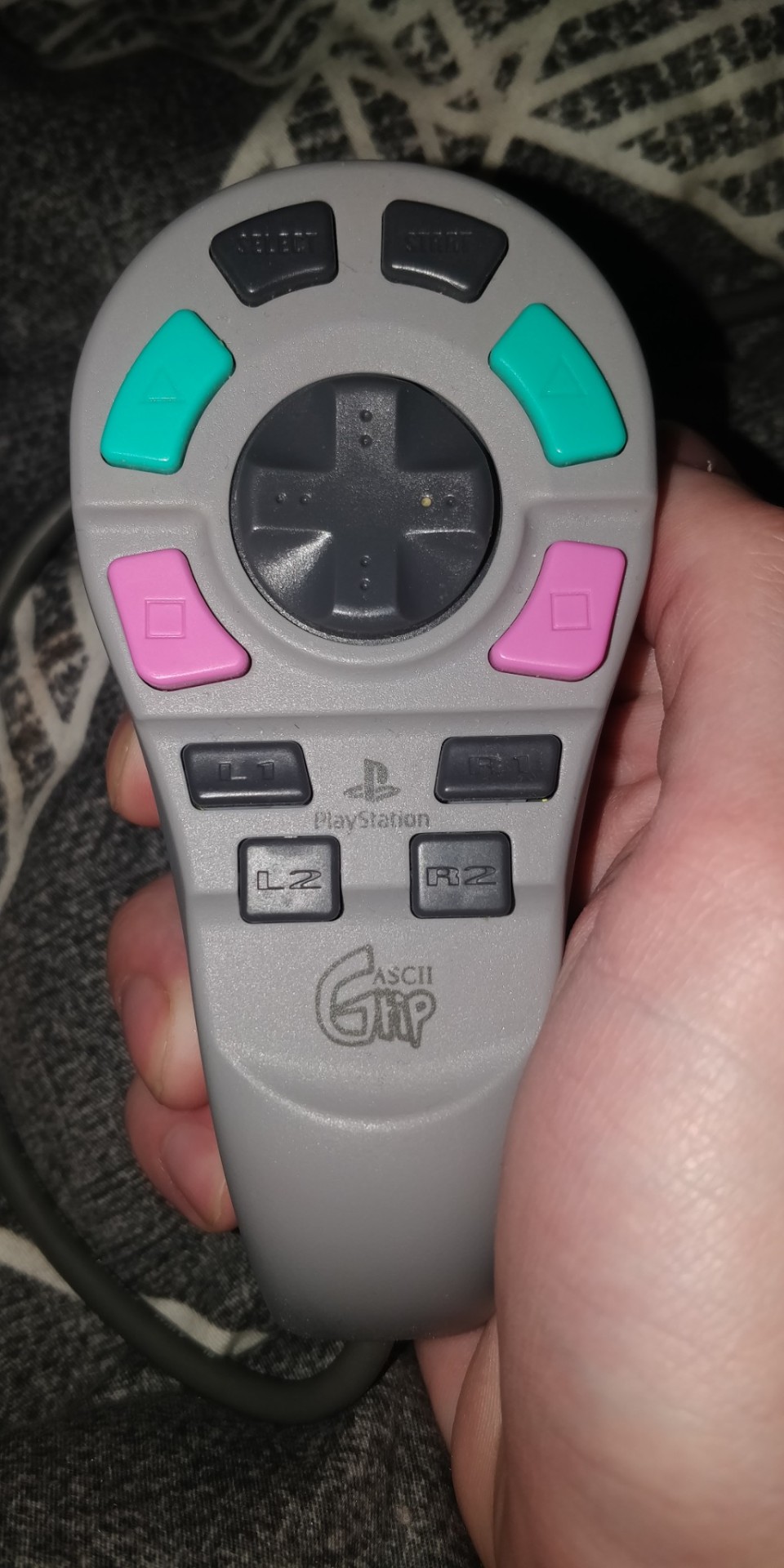
here's my ASCII grip. one handed controller mostly meant for RPGs but it can do anything a ps1 digital controller can. a lot of people seem to really dislike the dpad, but i don't mind it, kinda similar to a genesis 3 button pad but a lil smoother. hoping to one day dig more into the PS1/2 RPG library so i can eke more use out of this thing. i did a more or less full torami bnb in asuka with it once:
11 notes
·
View notes
Text
Ore no Ryouri (I'm the Chef)
Argent - PlayStation - 1999

[images from giant bomb, youtube, and emuparadise]
it's very satisfying when the controls for a game feel immersive. it's like using a fishing controller for a fishing game like Sega Bass Fishing, or a light gun for a shooting game like House of the Dead, or the Wii remote for the swordfights in Wii Sports Resort. not a lot of games go for that, and I think that's kind of a shame. one of the most high-action and unique of this kind of game is Ore no Ryouri (which literally means I'm the Chef), a super snappy and arcade-y cooking/restaurant sim for the PS1 developed by Argent (which I can't find any information about at all, if anyone has any please message me). it doesn't use any special controller, only gestures on the Dualshock controller's two joysticks to give you the feeling of cooking: using the left stick to tilt a glass and the right stick to pour beer, spinning a stick to stir batter, or pushing a stick back and forth to flip a patty in a pan. it's simple, but the responsiveness and mechanics around the gestures encourage you to cook as fast and hard as you can with its immersive controls, which is the real essence of the manic Ore no Ryouri.
sometimes when I hear about a game that started a genre, I wonder how good it can actually be compared to the modern alternatives. I haven't heard of any cooking games that came before Ore no Ryouri (message me if I'm wrong) and there have been plenty of cooking games since 1999, like Cooking Mama, the Papa's series, and Cook, Serve, Delicious!, so there's been some time for someone to make something better than the first one. "better" and "best" are matters of opinion, but I still think Ore no Ryouri is easily the best and wholly unique among cooking games and games that aim to have "immersive" controls.

Ore no Ryouri works like this: customers' orders pop up on a list and their patience drains over time, always visible at the side of the screen. different dishes are broken down into different steps, and each step is a different gesture with the sticks. how fast and accurate you are on each step in a dish determines your final score when you finally serve it, so you want to work fast and well -- many steps let you perform literally as fast as you can move the joysticks, which makes it as intense as you want it to be. sometimes you have to wait for something to boil or fry, and you can work on different orders during those waiting steps, though you have to be sure to take it off the stove at the right time. and occasionally there are "problem tasks" that show up and take a little more time to do, like washing dishes or chasing a runaway customer. if you let the time on one of these run out, all your customers instantly leave, which is almost a guaranteed loss. when your score is high enough, you win. that's basically it.
it's also got a really quirky story that I can't read because I don't know Japanese and a bright, fun art style indicative of a Japanese PS1 game. there's an awesome competitive mode where two players can go head to head in an intense culinary tug-of-war, which I've mostly only played against computers because that's the story mode and no one else has ever played this. but still. by the way, the disc looks like this!
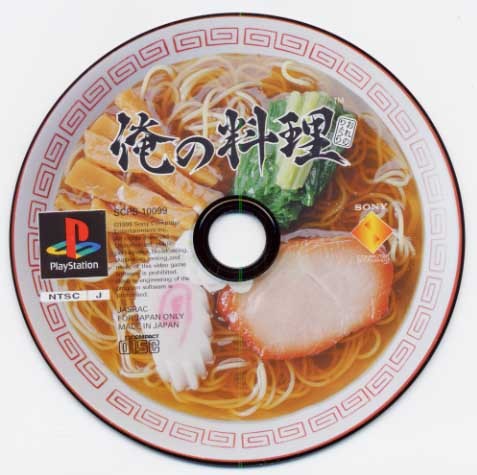
what I love about Ore no Ryouri is that it's ultra-responsive: it lets you go as fast as your hands and mind can take you. sometimes you have to wait for things to cook, but that's the time between, and even those few seconds of pause are important. if you take a long task at the wrong time, you might let burgers cook too long or let a customer get impatient and leave. balancing this just right and cooking as fast as you can with its odd immersive controls feels like nothing else. Cooking Mama is actually a great counter-example of responsiveness, since the minigames have lots of fanfare and tutorials between them and a simple dish can take a couple minutes start to finish, while Ore no Ryouri's long dishes take maybe 30 seconds. (Ore no Ryouri's tutorials are found during the "restaurant phase" of the sotry mode, where they show you the gestures you're supposed to do in the corner of the screen. the number of different gestures is also fairly limited, which is either for technical reasons or by design because it's hard to remember too many. either way, it feels great for its short runtime, though I wish there was more!)
by the way, cooking game fans probably already know Cook, Serve, Delicious! (CSD from here on), which is also a cooking/restaurant sim with really similar mechanics to Ore no Ryouri…because it is Ore no Ryouri. or it was. the first CSD was actually the commercial release of a fangame called Ore no Ryomi 3, the third in a line of fanmade PC remakes of Ore no Ryouri. the CSD series has definitely expanded mechanically on the foundation of Ore no Ryouri in a lot of interesting ways, and it does its best to emulate the intensity…but I think it falls short. it's like Guitar Hero on a keyboard instead of a guitar. there's just no comparison, even if Ore no Ryouri isn't as mechanically rich in certain ways. CSD is purely button-based, regardless of whether you're on controller or keyboard, and it just doesn't feel right after playing Ore no Ryouri. any fans of CSD should surely go back and give this one a try.
0 notes
Text
Ikaruga
Treasure - Lots of systems - 2001
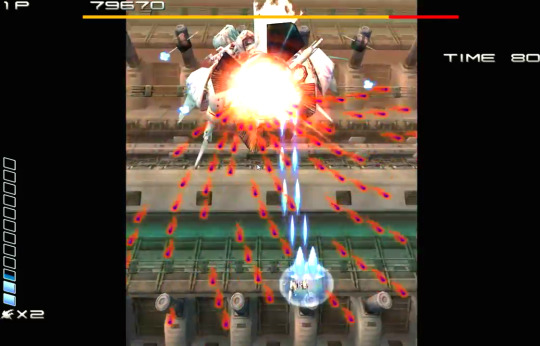
[images from gamefabrique & mobygames]
I couldn't get this game out of my head for a while and I was wondering why, since I usually don't care for shmups. this one is way too hard for me, but eventually I figured out what kept it in my mind for so long. as someone that's way into game design but not so much into shmups and ship design, I'm not really going to talk about other aspects of the game since I don't appreciate them fully, but its main mechanic is totally interesting enough to write almost an entire blog post about!
easily one of Treasure's most popular games (it has ports to every console ever even though it's almost 20 years old), Ikaruga is a master-class in shoot-em-ups, which is a genre I usually don't like, but it's impossible to not respect the design around its hook mechanic: polarity flipping. all the bullets, the enemies and your ship are either dark or light, and you can switch your own polarity with a button. every single encounter and boss is designed around this mechanic in a really exact way that elevates Ikaruga to a different level of shmup. as you improve as a player and learn more layers of the mechanic, the same levels gain new layers of challenge and reward hundreds of thousands of extra points.

there's one small thing that's absolutely essential to the flipping mechanic: there's a short time between switching colors that you can get hit by both. it's important to every level of using this mechanic. I love this kind of design where you can tell the time between is thoughtful and absolutely necessary. it's the same thing that makes the Dark Souls roll so satisfying to use well -- just enough so you have to think before you do it. that's the pause, and I'll mention it a lot.
flipping is really useful on a beginner level because if a bullet of your own polarity touches you, you absorb it and take no damage. for the first stage, you basically get to pick which bullets you want to worry about, so it gives you a good reason to use it and makes you feel smart for using it in the simplest way. but of course the pause I mentioned makes it so you can't turn your brain off. that's great to get people to play the game in an arcade and interesting design on its own, right?
the next simplest thing Ikaruga does to make you want to take risks is that being the opposite color of an enemy makes you do much more damage. since enemies usually fire shots of their own color, you'll have to think a lot more about dodging if you want to take advantage. also, enemies of your own color spray bullets on death, and combined with the pause, you can't shoot and flip recklessly, even at a beginner level.

instead of a standard Touhou-like bomb mechanic, Ikaruga has a powerful homing attack that charges as you absorb bullets, so it's actually a good thing to try to get as many as possible. sometimes that means putting yourself in danger to eat as much as you can for a bigger homing attack against a boss. when you get to this level, you have to start thinking about both colors at the same time, not just to dodge, but to figure out what would be the best way to charge the most energy as you move. against bosses, this makes it best to flip constantly to eat as many bullets as you can and bombard them with homing attacks of the opposite color, and thanks to the pause, that involves tons of risky situations and conscious thought about every bullet on the screen. quick kills on bosses give tons of extra points, so this is important for high ranks.
there's one more mechanic in the game that isn't strictly related to the polarity flipping, but combined with everything flipping is good for, you have to be a lunatic to take full advantage of it. Ikaruga has a chain system where destroying three of the same color enemies in a row increases your score multiplier, but doing it in groups other than three resets it to one. you can destroy black-black-black then white-white-white and get the bonus, but black-white-black or white-white-black would break it. this sounds hard to take advantage of, and it totally is, but with thoughtful play (most enemies come in groups of three to help with your chain) it's possible to keep this chain for the whole stage through the boss for incredible score that's necessary for high ranks.
unfortunately, Ikaruga has a crazy difficulty curve even if you aren't taking advantage of all the intricacies of flipping and the chain system, so it's not at all a game for shmup newbies, but I just had to talk about this awesome mechanic here. even if you choose the same difficulty on the menu, the depth of polarity flipping makes it so the game organically becomes more difficult and more rewarding as you improve. if anyone can point me to more games with mechanics like this, please show me in my ask box!
0 notes
Photo
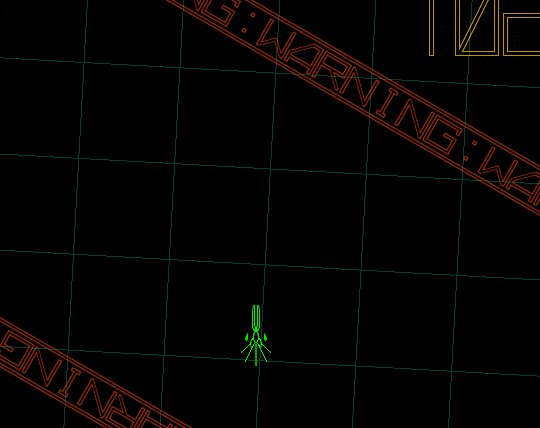

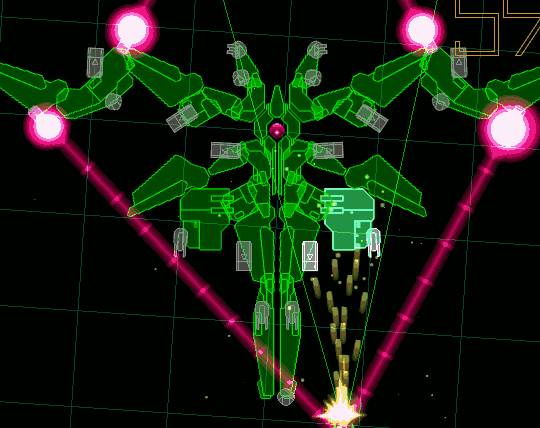
Warning Forever (2003)
A vertical-scrolling shoot-em-up by Hikoza T Ohkubo that consists entirely of boss battles against opponents that are procedurally generated to counter the weaknesses of your fighting style. As you beat each stage, the next boss gets generated with new abilities based on how you destroyed the last one.
This kind of adaptive play, with systems that react to the player’s actions and generate new content based on them is a powerful approach. It gives the player’s actions inherent meaning, demonstrating an active recognition of the choices that are made.
This kind of intimate feedback is difficult to create by hand, because choices need to be anticipated by the designer to be recognized, resulting in a relatively limited set of verbs that the game recognizes. But if we create a procedural system that can communicate to the player in its own language, we can create a dialog between the player and the game.
886 notes
·
View notes
Text
youtube
about Sakurai's "Keeping Rewards in Sight", and achievement and reward systems
while this is important consider, there's also a completely different response you evoke from players when you avoid telling them about the possibility of a reward
this video also got me thinking about what exactly separates a good achievement, progression, and reward system from one that feels tacked on, just so the game has one
Sakurai's usual achievement system like in Kid Icarus: Uprising and Kirby Air Ride is so effective because it allows the designer to give the player both experiences at once: the achievements are arranged in a grid, and every goal on this grid starts off hidden
when you unlock an achievement, sometimes you'll get a new ride or other gameplay feature, and it reveals the conditions for all its immediate neighbors
this way, the designer can offer lots of surprise unlocks while also putting more rewards in sight of the player! the uncertainty about whether an achievement will give a reward can also offer some surprise, but an achievement always reveals its neighbors, which is a reward in itself
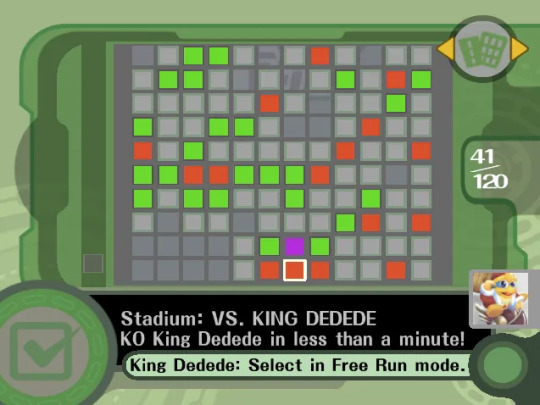
the location of most objectives on the grid is also randomized for each game save to give different players different surprising experiences with the system, and its nonlinear grid shape allows players to pursue their own path and get an even more varied experience
there's also the "free space" mechanic, where you're given a certain number of achievements of your choice to unlock without actually completing them
these can be used to unlock objectives that are too hard, or can be used in unexplored sections of the grid to give the player an idea of what else they should do to unlock the achievements there
traditional achievement and leveling systems have grown more popular in recent indie games to give the player both a sense of progression and a goal to work toward, but in many games it feels "tacked on" in a way: detached from the game's other systems and only present to give a sense of progression where there otherwise wouldn't be any, which is fine, but designers should aim for better than fine if possible

another strong example of a reward system is the mission system in Luftrausers, a score attack shmup where you can customize your plane
each part you unlock has a number of associated missions that must be completed in order
these missions give the player a goal in a game where the only other goal is a high score, and encourage them to try different play styles or aim to complete a difficult feat, and then reward the player with surprising new ways to play (more plane parts) and more missions to complete
each plane part has several missions to complete, which allows players that don't like a certain plane part can use other parts instead and still unlock more
it's a very smart piece of design for a very smart score attack game, a genre where design has to be highly focused to keep the player with it for more than a few minutes
essentially, the absolute best progression systems in games offer the player a goal to work for with the promise of some kind of reward, but keeping that reward vague (or even the goals themselves vague) allows the designer to surprise and delight the player with something unexpected!
(also, hi! excuse the hiatus, i wasn't really enjoying the exact writing i was doing -- this is obviously a lot different -- and college started so i kind of slowed down. but i hope to post a little more these days, i have lots of thoughts about game design! thanks for reading!)
2 notes
·
View notes
Photo
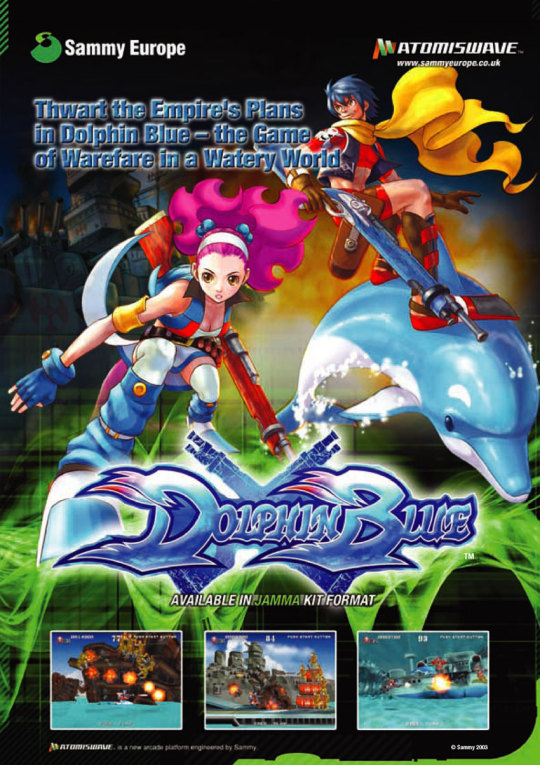

‘Dolphin Blue’
[ARC] [EU] [FLYER] [2003]
via The Arcade Flyer Archive
So how come no one told me they made a ‘Waterworld’ anime?
142 notes
·
View notes
Text
Rakugaki Showtime
Treasure - PlayStation - 1999

[images from xtremeretro.com]
rare, expensive, Japan only, developed by Treasure, and incredibly fun. and published by Square of all people. what's not to like? when the Nintendo 64 had Super Smash Bros, the PlayStation had Rakugaki Showtime, but only in Japan for some reason. it's a 3D party fighting(?) game that reviewers like to compare to dodgeball with no bounds, and now that Smash Bros is well known, I can compare it to that except it's 90% items and in glorious 3D! it feels similar to modern indie party games like Samurai Gunn and Towerfall with simple controls and fast gameplay, but it's sadly stuck in Japan on the PS1. there was going to be a Gamecube "sequel" in all regions with Tiny Toons branding which never came out, though there is a leaked beta online.

there's a story mode with a basic plot where you unlock characters, a training mode, four player free-for-all, and a bunch of characters to unlock. they each have some unique moves and at least one Super Smiley Attack by picking up a Super Smiley Ball, which gets charged by being thrown around. pretty much like a Smash ball. most of the time, though, you'll be throwing items in each stage at your enemies, which include missiles, black holes and boulders. for ease of use, many items are either very large or have homing, and there's a convenient homing jump toward the nearest item so you don't have to walk. as I'm writing I notice this post has a way different mood than most of my others, but it's Rakugaki Showtime. it deserves it.
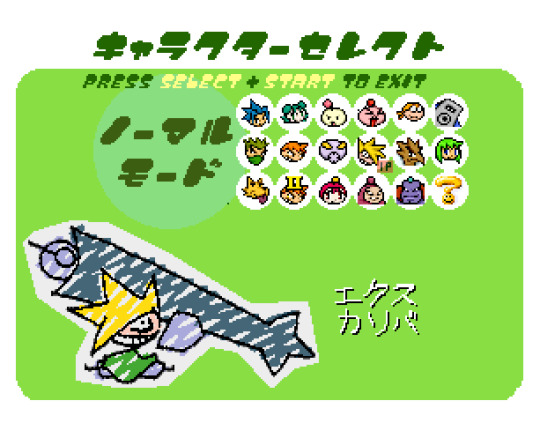
two of my favorite characters on the roster are this knock-off Cloud Strife looking guy called Ex Calibur, who can't hold items because his sword is too heavy (and so has a range of sword attacks), and Marina Liteyears, a cameo character from Mischief Makers who has the completely broken ability to instantly charge a Smiley Ball by shaking it. she can shake other items to make them bigger and stronger. all the characters are fun in their own way, these are just my favorites.
strange how little I have to say about one of the most fun games I've ever written about. there's just not much to it. (tangent incoming.) it takes a lot behind the scenes to make a party game like this where there's "not much to it" so much fun, which makes me think of Nintendo's recent development philosophy where they put play first. in a certain video by Ceave Gaming he points out some faults to this philosophy — often, the visual design of levels and other non-gameplay considerations will suffer from Nintendo laser focus on gameplay. that explains why Breath of the Wild, for example, controlled so well and had so many interesting systems, but shrines and the divine beasts were aesthetically samey. Treasure, meanwhile (or at least when they made video games), aimed to make technically and visually impressive games on any console they developed for while making no sacrifices in gameplay. Rakugaki Showtime especially has loads of personality in all its characters.
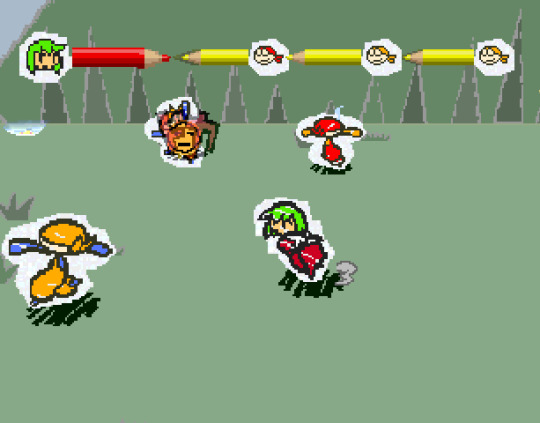
unlike Nintendo, Treasure never aimed to be mainstream, only developing the games they wanted to play and licensed games to make money in between. Nintendo made some great games while Treasure was active that arguably had more charm than their modern library, and that decline in personality may be from their need to appeal to as many people as possible — a much broader audience than the 90s or early 2000s and a need to keep profits up. I can only wonder what Treasure would do for a 2022 release since their last game was Gaist Crusher God, a 3DS game made with Capcom nearly 10 years ago. they are still "active," at least, and release a new Ikaruga figure and post on Twitter every now and then.
the train of thought kind of derailed toward the end, but I think Rakugaki Showtime (and Treasure) deserve it. I think I might like Treasure.
9 notes
·
View notes
Photo
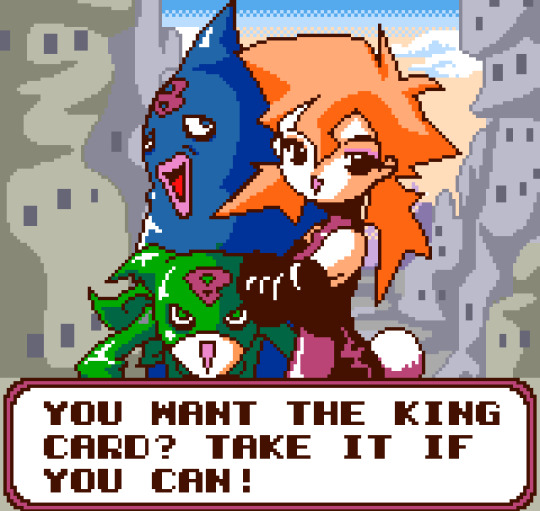
“YOU WANT THE KING CARD?” -
Puzzle Link 2 (Yumekobo - NGPC - 1999)
93 notes
·
View notes
